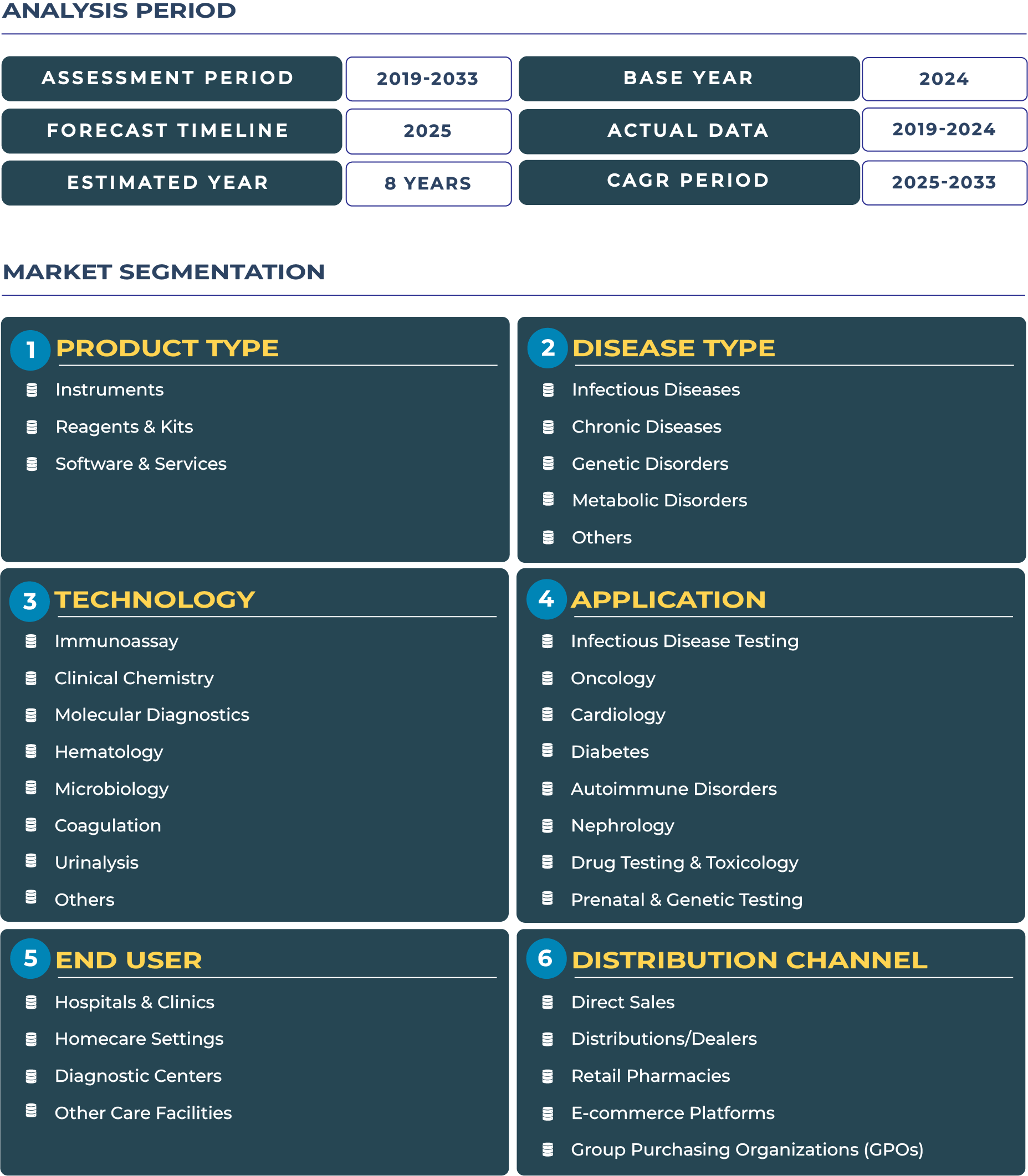Colombia’s Medical Tourism Expansion Fueling Momentum in the In-vitro Diagnostic Market
Colombia has rapidly evolved into one of Latin America’s leading medical tourism and medtech destinations, attracting patients from across the Americas seeking affordable, high-quality care. Cities such as Bogotá, Medellín, and Cali have become regional centers for advanced procedures, particularly in orthopedics and aesthetic medicine, supported by state-of-the-art laboratories and diagnostic infrastructure. This rise in private healthcare investment has significantly accelerated the adoption of in-vitro diagnostic (IVD) technologies, enabling hospitals and clinics to deliver faster and more accurate diagnoses to both domestic and international patients.
According to DataCube Research, the Colombia In-vitro Diagnostic Market is valued at USD 527.4 million in 2025 and is projected to reach USD 837.6 million by 2033, growing at a CAGR of 6.0%. This steady expansion reflects the nation’s growing healthcare sophistication, government efforts to attract foreign patients, and an increasing demand for modern diagnostic services. The convergence of Colombia’s Ministry of Health and Social Protection initiatives with private-sector innovation is reshaping the country’s diagnostic landscape into a dynamic and high-growth ecosystem.
Expanding Insurance and Private Investment Driving IVD Sector Growth
The Colombian in-vitro diagnostic industry is propelled by expanding healthcare coverage, investment in private hospital infrastructure, and the modernization of diagnostic facilities. The national health system’s emphasis on universal access has encouraged insurance providers to include advanced diagnostic testing in their coverage, expanding the addressable market for reagents, instruments, and analytical software. Major private hospital networks such as Clínica del Country and Fundación Santa Fe de Bogotá are investing heavily in next-generation laboratory automation systems, enabling faster turnaround times and more consistent clinical outcomes.
Moreover, Colombia’s strategic positioning as a regional healthcare hub has attracted international partnerships, including joint ventures with global diagnostic manufacturers. The integration of advanced molecular diagnostics and immunoassays is also enhancing early disease detection and chronic care management, particularly in oncology and infectious diseases. These developments reinforce the nation’s potential to become a benchmark for diagnostic excellence in Latin America.
Fragmented Reimbursement and Regional Barriers Constrain Uniform Growth
Despite the strong upward trajectory, the Colombia IVD market faces structural barriers. A fragmented payer environment, marked by varying reimbursement timelines across public and private entities, creates inefficiencies that delay technology adoption. Rural regions continue to struggle with limited logistics infrastructure and transport security issues that hinder timely delivery of reagents and instruments. These logistical complexities elevate operating costs for diagnostic laboratories in smaller cities and remote areas.
In addition, the high price sensitivity of regional laboratories often restricts procurement of high-end testing systems. Many local facilities rely on mid-tier reagent kits rather than premium automated systems, reducing consistency and scalability in diagnostic output. Addressing these challenges will require deeper alignment between public health authorities and private sector participants to develop sustainable pricing and delivery frameworks.
Consolidation and Ambulatory Care Expansion Redefining Market Trends
Recent years have witnessed a clear shift toward private chain consolidation and ambulatory diagnostic expansion in Colombia. Major private healthcare providers are increasingly acquiring independent labs to standardize testing quality and integrate advanced analytics platforms. This consolidation trend is creating economies of scale that enhance supply chain efficiency and service delivery. Simultaneously, the rapid growth of ambulatory and outpatient centers is driving the adoption of compact diagnostic instruments capable of high throughput in smaller spaces.
Colombia’s growing interest in orthobiologics and regenerative therapies is also fostering demand for specialized diagnostic solutions that support preoperative assessment and postoperative monitoring. These emerging applications are opening new frontiers for IVD manufacturers to supply customized reagents and kits tailored for sports medicine, trauma care, and orthopedic recovery diagnostics.
Tiered Pricing and Partnership Models Paving the Way for Future Opportunities
The most promising opportunities in Colombia IVD sector lie in the rise of private chain partnerships and outcome-based contracting. Collaborations between diagnostic solution providers and leading healthcare chains allow for pilot projects that demonstrate measurable clinical improvements, justifying higher average selling prices and sustainable adoption. Tiered pricing strategies are gaining traction, allowing large hospital groups to access high-performance platforms while maintaining affordability for mid-sized labs.
Clinical outcome partnerships, where diagnostic providers link payment structures to measurable patient outcomes, are also emerging as a differentiator. By aligning incentives with health results, vendors are able to integrate more deeply into clinical workflows. As Colombia’s healthcare ecosystem becomes increasingly data-driven, these partnerships will redefine value creation within the IVD landscape.
Competitive Landscape: Strategic Collaborations Shaping the Future of Colombian Diagnostics
Colombia IVD market features a blend of global and regional players, including Roche Diagnostics, Abbott Laboratories, Siemens Healthineers, and local firms such as BioSystems Colombia. In 2024, Roche introduced advanced PCR-based platforms in partnership with top-tier hospital laboratories in Bogotá, aiming to enhance testing precision for infectious diseases and oncology diagnostics. Siemens Healthineers expanded its presence by deploying laboratory automation solutions to leading private networks, reflecting the industry’s growing emphasis on integration and digital monitoring.
Several companies are adopting a partner-with-private-chain strategy, a model that leverages existing healthcare networks for faster market penetration. Outcome-based pilots and adaptive pricing strategies are becoming central to their success. These approaches allow diagnostic manufacturers to demonstrate tangible improvements in clinical efficiency while building long-term client trust. The combined effect of these strategies is a more resilient, collaborative, and innovation-driven in-vitro diagnostic ecosystem across Colombia.







